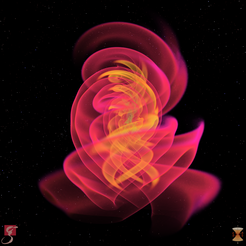Continued discoveries from public data
International team led by Max Planck researchers finds promising new candidates for gravitational waves from binary black hole mergers in public LIGO/Virgo data
Researchers from the Max Planck Institute for Gravitational Physics (Albert Einstein Institute; AEI) in Hannover together with international colleagues have published their second Open Gravitational-wave Catalog (2-OGC). They used improved search methods to dig deeper into publicly available data from LIGO’s and Virgo’s first and second observation runs. Apart from confirming the ten known binary black hole mergers and one binary neutron star merger, they also identify four promising black hole merger candidates, which were missed by initial LIGO/Virgo analyses. These results demonstrate the value of searches in public LIGO/Virgo data by research groups independent of the LIGO/Virgo collaborations. The research team also makes available its complete catalogue in addition to detailed analysis of more than a dozen possible binary black hole mergers.
“We incorporate cutting edge methods,” says Alexander Nitz, a staff scientist at the Max Planck Institute for Gravitational Physics (Albert Einstein Institute) in Hannover, who led the international research team. “Our improvements enable discovering fainter binary black hole mergers: the four additional signals show that this works!”
The results were published in The Astrophysical Journal today.
New discoveries in old data

The international research team analyzed the publicly available gravitational-wave data taken by the Advanced LIGO and Advanced Virgo detectors in their first (O1: September 2015 – January 2016) and second (O2: November 2016 – August 2017) observation runs. These have been previously analyzed by the LIGO Scientific and the Virgo collaboration. Ten binary black hole mergers and one binary neutron star merger have been found. Another independent analysis had previously found multiple additional black hole mergers.
The work led by Nitz confirms 14 of these events and finds one more possible binary black hole merger missed by previous analyses. If real, GW151205 came from a rather distant merger of two massive black holes of about 70 and 40 times the mass of our Sun, respectively.
The trick was not only an improved way of ranking potential gravitational-wave signals, but also to target the properties that binary black holes are expected to have. “We have an idea of what the typical mass is of a binary black hole from the signals that were already detected,” explains Collin Capano, a senior researcher at the AEI Hannover and co-author of the publication. “Our sensitivity to binary black holes is improved by 50% to 60% by using this information to tune our search to look for the most likely signals.”
No new binary neutron star mergers
The team finds no new candidates for binary neutron star mergers in LIGO/Virgo data from O1 and O2. Because only two binary neutron star mergers have been identified by their gravitational waves and the underlying population is not well-known, a targeted search is not yet possible.
The 15 signals reported now are only a small part of a larger online catalogue. The team published its complete catalog of events, including statistically less significant candidates and the detailed results of their analysis. “We hope that these data will enable other researchers to conduct future in-depth searches by providing a better understanding of the binary black hole population, as well as background noise,” says Sumit Kumar, a senior researcher at the AEI Hannover and co-author of the publication.












